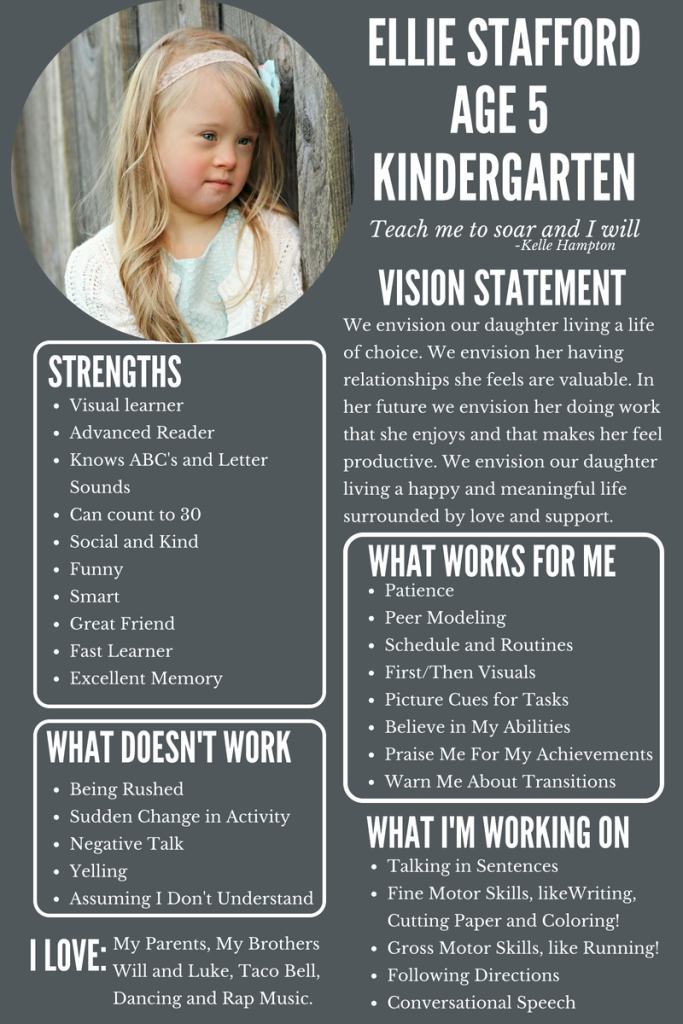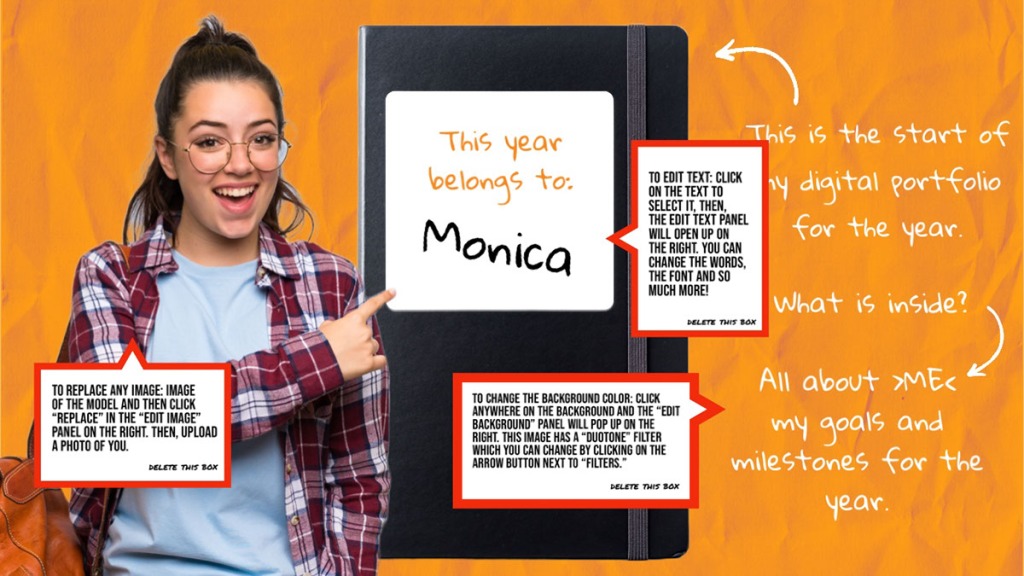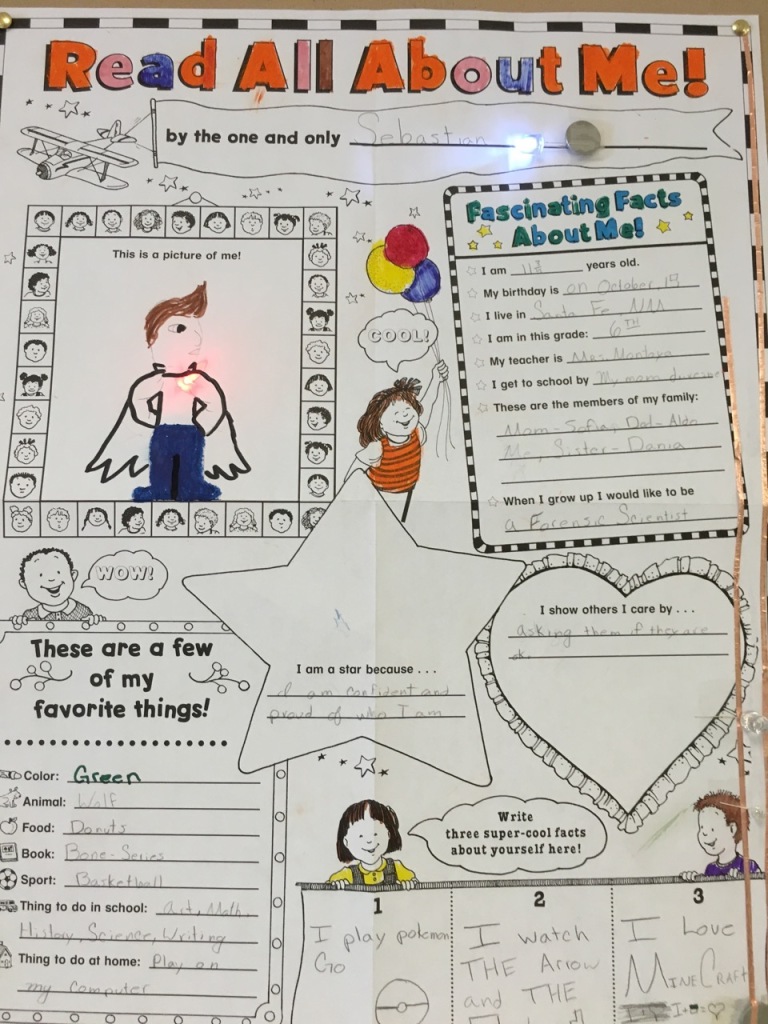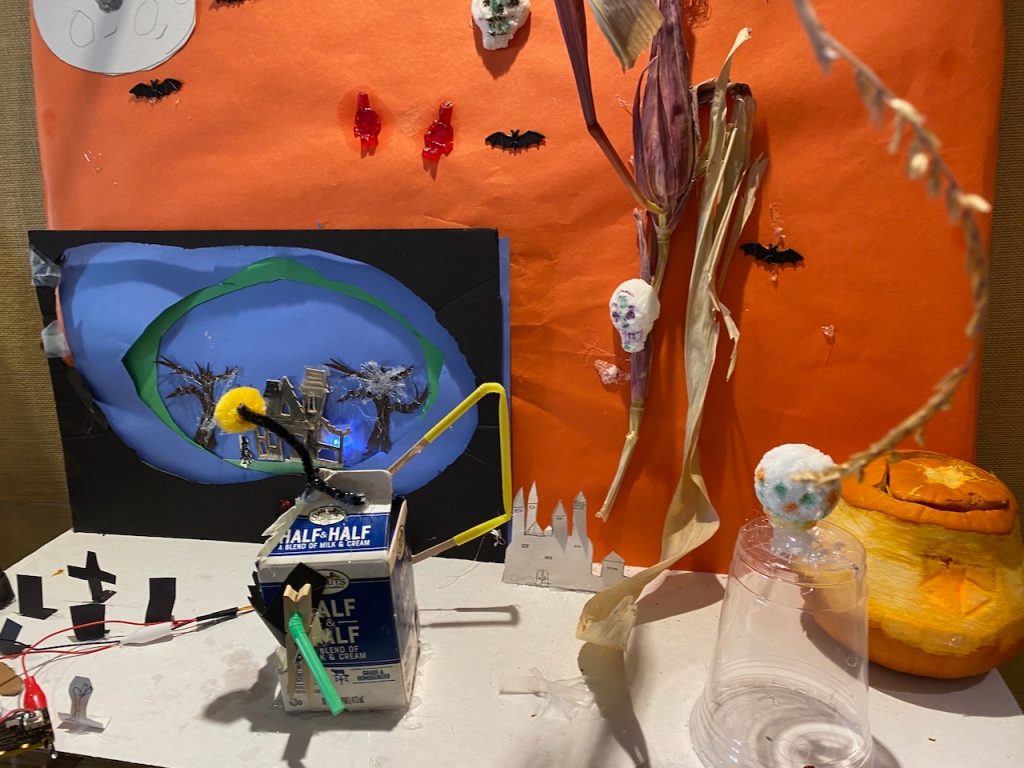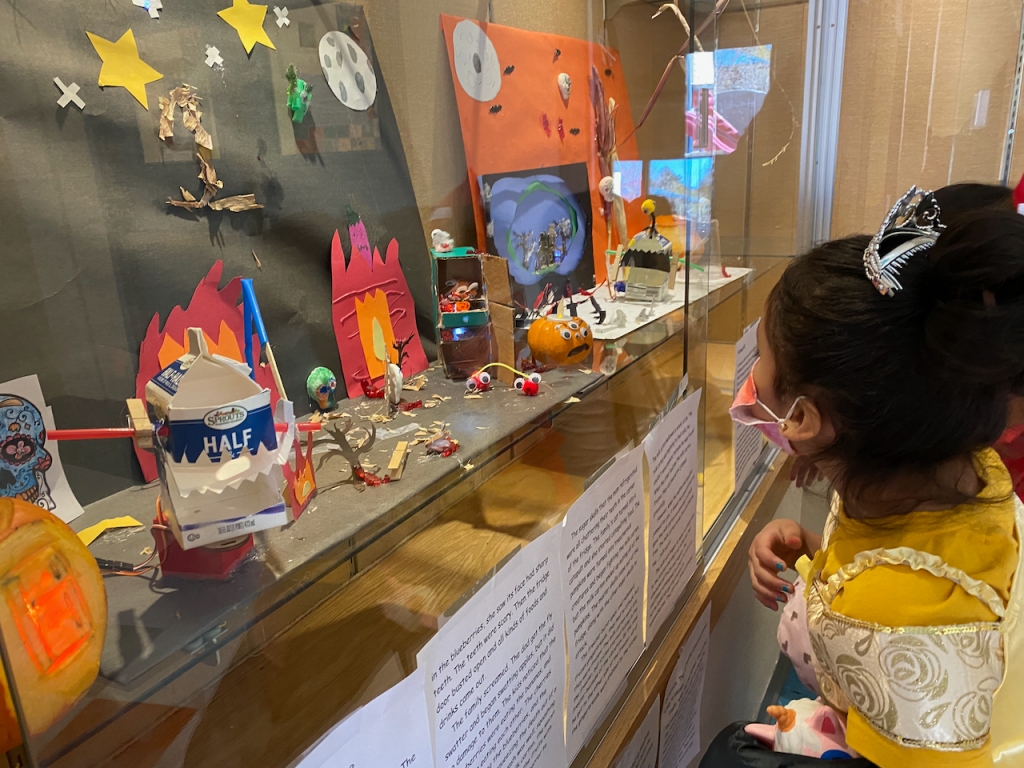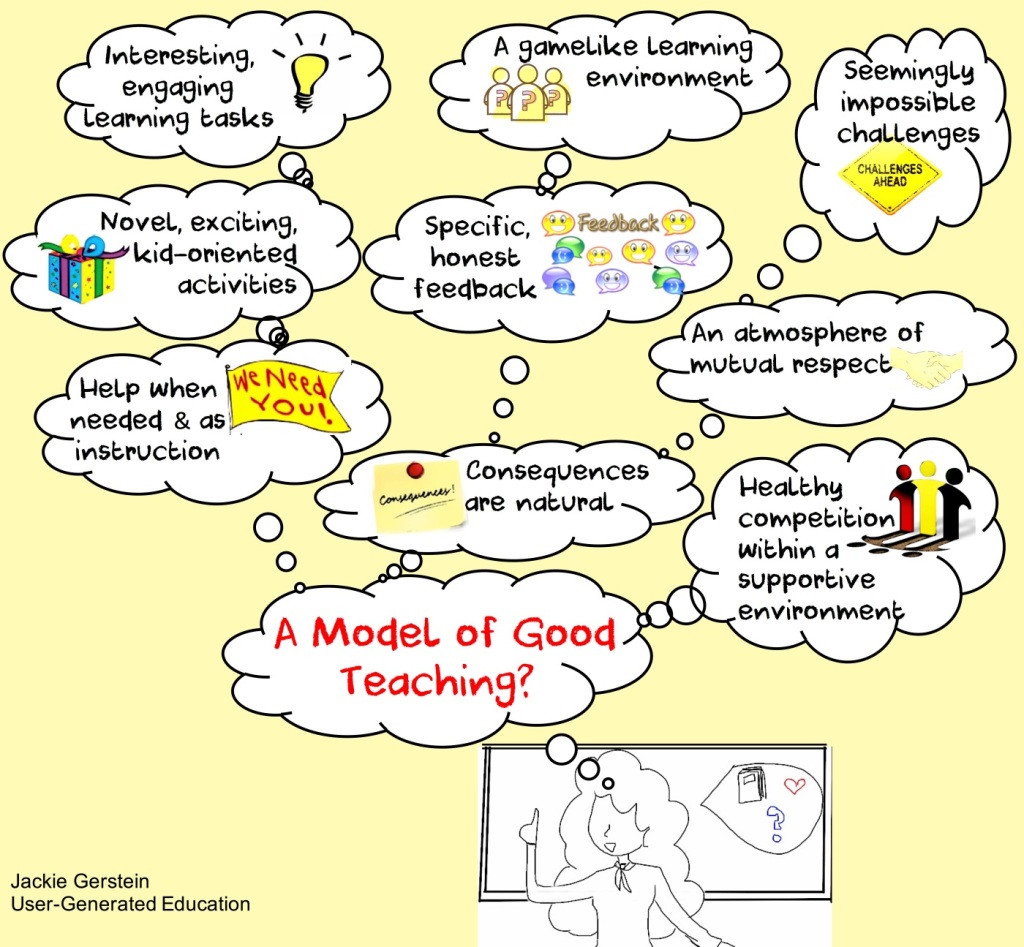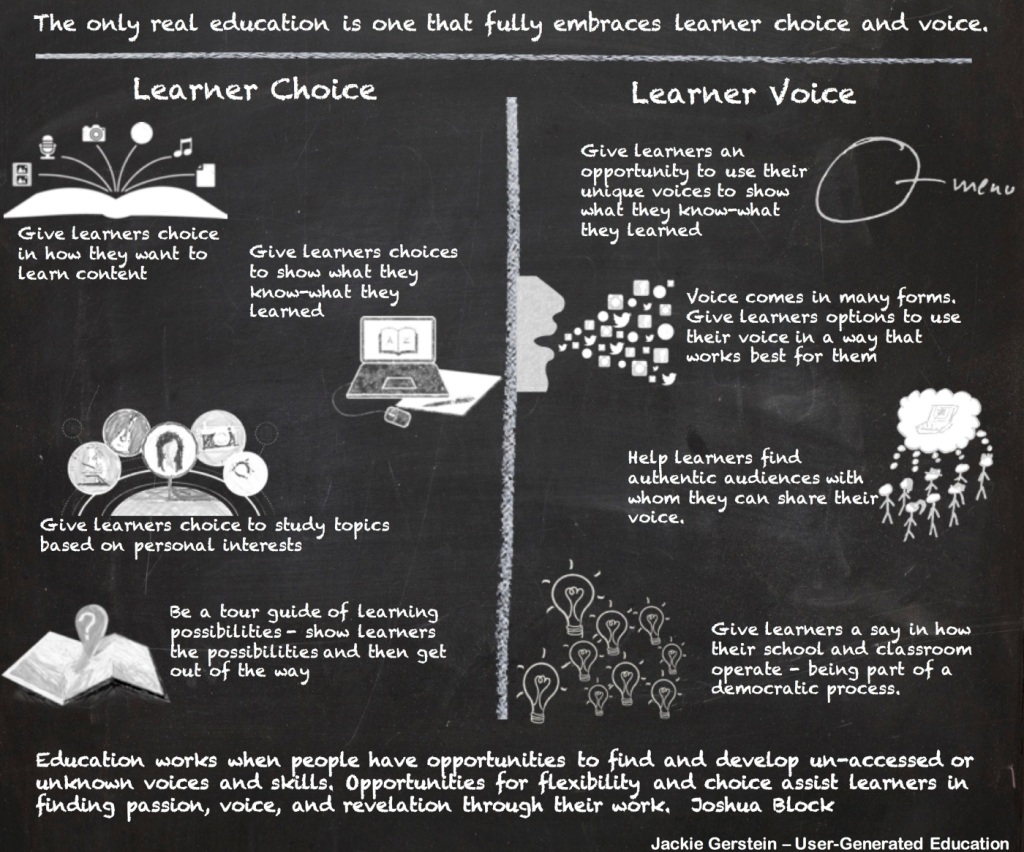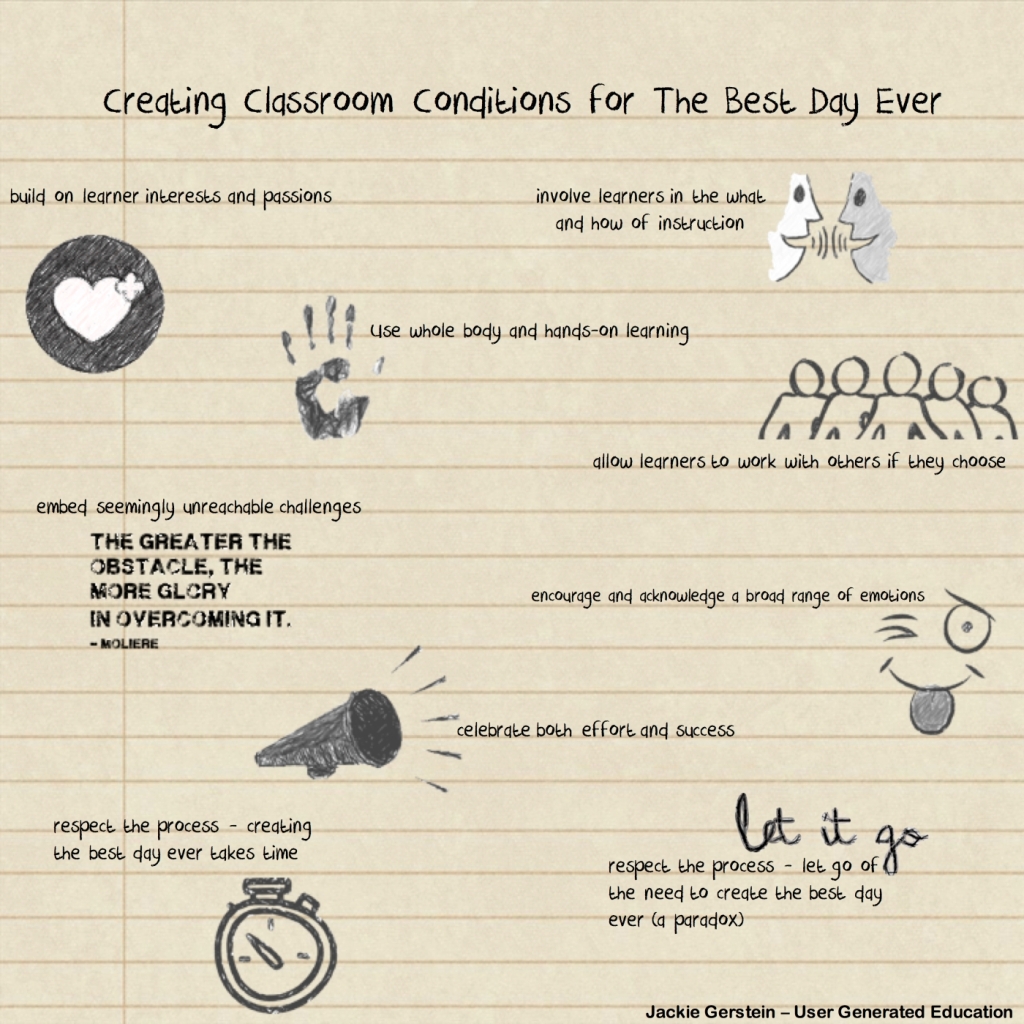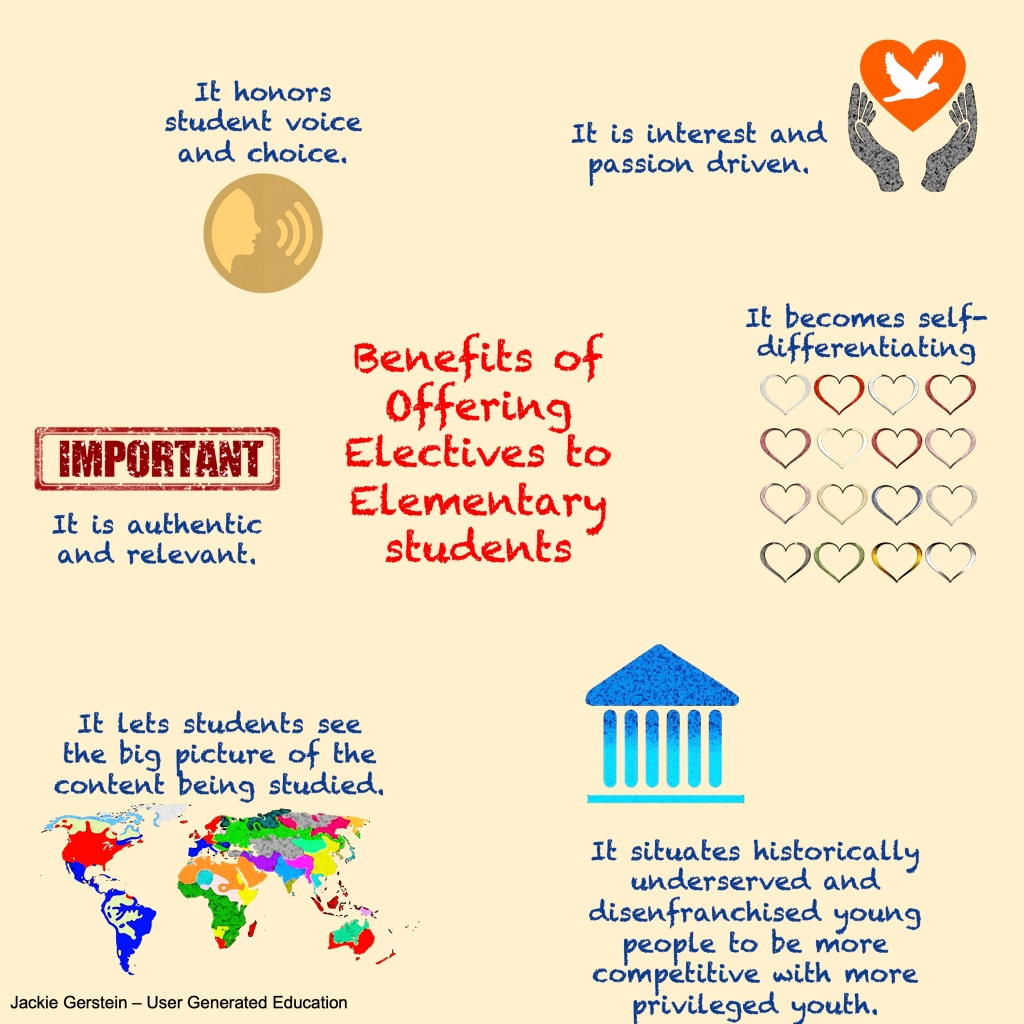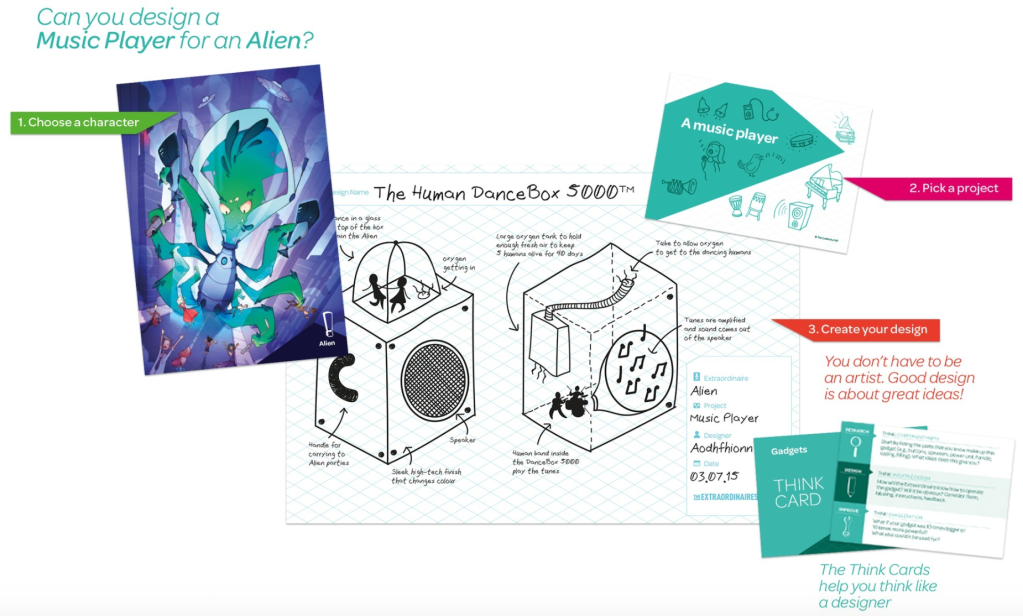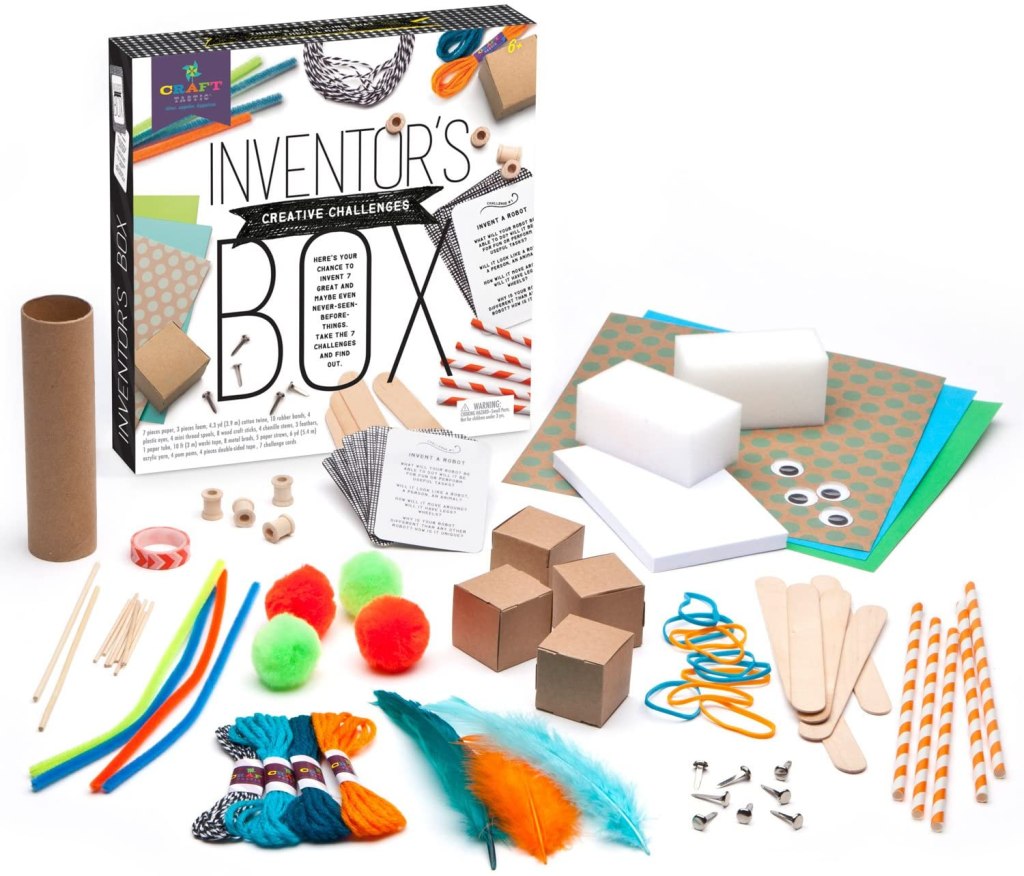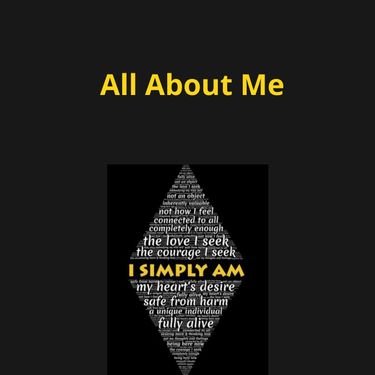Posts Tagged ‘student choice’
The Beartown Play: A Play Written, Enhanced, and Performed by 6th Graders
I often give my students choice and voice which I discussed in my blog post, Giving Students Choice and Voice.
This project, written, enhance, and performed by 6th graders, was truly an example of voice and choice along with having them do a Type III enrichment project. Three 6th grade girls began this project last year in their gifted class as a stop-motion animation. They asked if they could continue it as a play when I become their gifted education teacher. I said, “Absolutely,” and provided some guidance and coaching as they worked on it all semester (about 3 hours per week).
This project could be classified as Type III enrichment as described in The Enrichment Triad Model developed by Joseph Renzulli, a leader and pioneer in gifted education. Type III Enrichment incorporates investigative activities and the development of creative products in which students assume roles as firsthand investigators, writers, artists, or other types of practicing professionals (https://renzullilearning.com/wp-content/uploads/2019/08/TheEnrichmentTriadModel.pdf).
For this project the girls:
- Wrote, refined, and formatted their script so it included dialogue that it sounded good and was grammatically correct, was formatted like a TV or movie script, had stage directions and good narrations.
- Created a broadway show type program designed in Canva.
- Included sound effects from the internet and uploaded into Google Slides in a way that made sense to their sound technician
- Included commercials written and recorded to be satires of local commercials.
- Made technology-enhanced costumes using fairy lights, Turtlestitch embroidered/LED lit patches, micro-bit/neopixels, and circuit playgrounds.
They elicited the assistance of 6th grade friends for the performance at our school’s talent show.
The Script
As stated above, the story was conceptualized and began the previous. The girls asked to continue it as a movie during this school year. We spent months revising it. I acted as a coach, pointing out plot holes and grammatical errors along with assisting them in formatting it in a standard script form.
Inserting Sound Effects
Recording Self-Composed Commercials
Making Costumes
The girls made patches for their story characters designing them in Turtlestitch, a browser-based educational programming language (Snap!) to generate patterns for embroidery machines, and then sewing them with an embroidery machine.


One student decided to light up her character’s patch using Lilypad lights. This was her first time sewing so she was rightfully proud of herself.
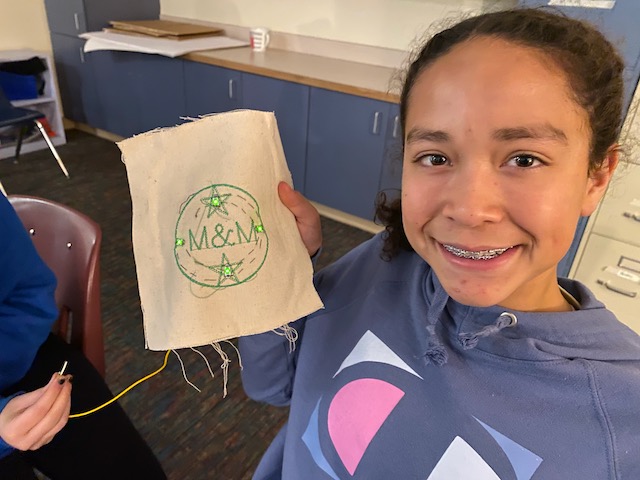

The girls used fairy lights to create head decorations and they coded Neopixels and Circuit Playgrounds to light up the other actors’ costumes.


Creating the Playbill Program
The girls examined Broadway Playbills and then used Canva to create their own.
The Performance
The video below contains some of the excerpts from the talent show performance (note that the girls only had a few rehearsals with their classmates and none in the gym using the mics that were used during the talent show.
Standards Addressed
Common Core State Standards – ELA
- Write narratives to develop real or imagined experiences or events using effective technique, relevant descriptive details, and well-structured event sequences.
- Engage and orient the reader by establishing a context and introducing a narrator and/or characters; organize an event sequence that unfolds naturally and logically.
- Use narrative techniques, such as dialogue, pacing, and description, to develop experiences, events, and/or characters.
ISTE Standards for Students
- Students leverage technology to take an active role in choosing, achieving and demonstrating competency in their learning goals, informed by the learning sciences.
- Students communicate clearly and express themselves creatively for a variety of purposes using the platforms, tools, styles, formats and digital media appropriate to their goals
NAGC Standards
- Students with gifts and talents demonstrate their potential or level of achievement in their domain(s) of talent and/or areas of interest.
- Students with gifts and talents demonstrate growth in personal competence and dispositions for exceptional academic and creative productivity. These include self-awareness, self-advocacy, self-efficacy, confidence, motivation, resilience, independence, curiosity, and risk taking.
- Students with gifts and talents develop competence in interpersonal and technical communication skills. They demonstrate advanced oral and written skills and creative expression. They display fluency with technologies that support effective communication and are competent consumers of media and technology.
Halloween Displays: A Perfect STREAM (Science, Technology, wRiting, Engineering, Art, Math) Lesson
Wow, wow, wow! My students finished their displays in time for Halloween after spending many, many hours working on them. Now, they are in display cases in the lobby of our elementary school. I am so proud of them and rightfully, they are very proud of themselves, too. They worked so hard on them.
A little history . . . I love Food Channel’s competitions and Halloween Wars tops my list. This is where I got the idea for this lesson. Each Halloween season, I become enamored with the passion, creativity, talent, and skill of the sugar, cake, and pumpkin artists on this show. This led me into wanting to bring this type of passion into my classrooms; so several years ago I started a yearly Halloween Wars during each Halloween season (none during our COVID shutdown, though); and yes, it’s a team competition which makes it even more exciting for the students. Needless to say, I was thrilled to bring it back this year allowing a new group of students the opportunity to experience it. As mentioned in the title, I believe this to be a perfect STREAM (Science, Technology, wRiting, Engineering, Art, Math) lesson. This post describes the learning activities and standards addressed.
Background Information
The principles that drive my instructional approach. regardless of theme, include:
- Instructional challenges are hands-on and naturally engaging for learners.
- There is a game-like atmosphere. There are elements of play, leveling up, and a sense of mastery or achievement during the instructional activities.
- The challenges are designed to be novel and create excitement and joy for learners.
- There is a healthy competition where the kids have to compete against one another.
- Learners don’t need to be graded about their performances as built-in consequences are natural.
- There is a natural building of social emotional skills – tolerance for frustration, expression of needs, working as a team.
- Lessons are interdisciplinary (like life) where multiple, cross-curricular content areas are integrated into the instructional activities.
These have been further discussed in A Model of Good Teaching?
The goals included the following:
- To work in a small group to create a Halloween scene using art work, LEDs, microcontrollers, servos, food items, and miscellaneous materials.
- To work as a small group to craft a story about their scene.
- To introduce and reinforce ideas, concepts, and skills associated with maker education, STEM, STEAM, and STREAM.
- To engage in a friendly team competition whereby collaboration in their small groups would lead to success in the competition.
Descriptions of the Individual Components
Science Related Activities and Standards
Learners did several activities that involved LED circuits (simple LED lights, LED Tea Light Spider Pumpkins, and Paper Circuit Skulls) and circuits with microcontrollers (see Technology section).
Science Standard:
- NGSS: 4-PS3-2. Make observations to provide evidence that energy can be transferred from place to place by sound, light, heat, and electric currents.
Technology Related Activities and Standards
For their displays, learners used servo socks to make parts of their display turn, micro:bits and servos to make milk carton robots, and Circuit Playground to make a flickering light to put inside their carved pumpkins. They needed to code their micro;bits and Circuit Playgrounds.
Computer Science Standards:
- 1B-CS-02 – Model how computer hardware and software work together as a system to accomplish tasks.
- 1B-AP-10 – Create programs that include sequences, events, loops, and conditionals
- 1B-CS-03 – Determine potential solutions to solve simple hardware and software problems using common troubleshooting strategies

wRiting – Language Arts Related Activities and Standards
Learners wrote stories that drove their displays. They did so in Google docs so they could write collaboratively. My “rule” was that they could only use elements in their displays that were part of their stories. This necessitated that they revisit their stories throughout this lesson.
ELA Standard:
- CCSS.ELA-LITERACY.W.5.3: Write narratives to develop real or imagined experiences or events using effective technique, descriptive details, and clear event sequences.
Example Stories:
Engineering Related Activities and Standards
Overall, engineering was used throughout this project from creating display artifacts – one student built a cardboard refrigerator with working parts and the milk carton robot to figuring out how to hang and arrange things on their display board.
NGSS Engineering Standards:
- 3-5-ETS1-1. Define a simple design problem reflecting a need or a want that includes specified criteria for success and
- constraints on materials, time, or cost.
- 3-5-ETS1-2. Generate and compare multiple possible solutions to a problem based on how well each is likely to meet the
- criteria and constraints of the problem.

Arts Related Activities and Standards
The entire display was an arts related activity, but I include a specific art activity, the Spooky Halloween 3D Art Project.
National Core Arts Standards:
- Anchor Standard #1. Generate and conceptualize artistic ideas and work.
- Anchor Standard #2. Organize and develop artistic ideas and work.
- Anchor Standard #3. Refine and complete artistic work.
Math Related Activities and Standards
Learners made their own Sugar Skulls and Gummy Legos (Bears) using recipes I projected on the Smartboard. They were asked to cut the recipes in half or thirds.
Math Standard:
- CCSS.MATH.CONTENT.5.NF.B.7: Apply and extend previous understandings of division to divide unit fractions by whole numbers and whole numbers by unit fractions.
It was so much fun to find and design these activities but it was even more fun watching the learners do them all. I can’t wait until next year!
Watching Them Learn
I have been very intentional in the public school teaching jobs I have chosen. First I was a PE teacher, now I am a gifted education teacher. I chose these jobs because I believe in active, hands-on, and joyful learning. I love being able to provide them with learning experiences not based on preparing them for toxic tests, but on how humans learn naturally outside of school settings. I also base many of my learning activities on my belief on the need for humans to create which I discuss more in The Magic of Making: The Human Need to Create:
The conclusion I came up with is that the human need to create is innate; and that too many people, starting during their childhood public education, stop creating. When they are given the opportunity, permission/invitation, materials, and methods, they fully embrace making and creating.
- I love watching them go through all of the crafty materials trying to find the right ones for their projects.
- I love watching them try to figure out how everything fits together in their projects.
- I love watching them struggle to get something to work that matches their mind’s eye, and the joy they experience when they do.
- I love watching how fully engaged they become in their learning, how they get into a flow, and how nothing else exists in the world.
- I love watching how when I give them a math challenge, the students gather around the interactive Smartboard in order to solve the challenge.
- I love watching how the collaborative projects build friendships, and the joy they feel in just being with one another. They ask to spend lunch together in my classroom. They ask to come to school on days off.
- I love watching the pride that shows on their faces when their projects are completed.
I have the best job in the world. I get to have a front row seat to witness these beautiful human beings do what they are supposed to do – LEARN – really learn.
Student Choice and Voice Can Equal the Best Day Ever
As is true for a lot of progressive educators, I have a belief in and attempt to practice the implementation of student voice and choice:
Sometimes this means fully letting go of the reins so learners become completely self-directed. I had the privilege of witnessing this in action one afternoon last week. I use the word, “witness,” as it was totally due to the actions of one student.
As I do every Thursday, I “pulled-out” 4th-6th graders for gifted and talented services. During the morning they built and experimented with Wiggle Bots. One of the students, Sean, also began experimenting with some of the materials in an attempt to build a toy bow (out of skewers) and arrow (out of jumbo straws). I asked him to focus on making his Wiggle Bot but told him he could continue his experimentation during lunch (they voluntarily spend lunch with me on Thursdays). They stay with me after lunch for an hour+. I do math challenges with them during those times. Sean asked if he could continue to work on fine tuning his bow and arrow instead. Then, the other kids asked if they could do so, too. Being a learner-centric educator, who values student choice and voice, I said, “Sure, go for it.”
I am so happy I did! They played with the continual improvement of their straw arrows; iterated through testing, and modifying them; and tried out different materials for their tips and tails in an effort to create increased distance and accuracy . . . again with little intervention from me. They went outside to test their work, and later, to play games with their arrows that they made up – most notably one that mimicked the video game Among Us. Seeing such joy in their social interactions warmed my heart. I know how important allowing for social time is for this age group especially after last year’s isolation due to remote learning – just as important or even more important than content area instruction.
I witnessed their creativity, innovation, flow, positive social interactions, excitement, engagement, and joy during this student-driven activity. Sean was visibly very excited that not only was he successful in making his bow and arrow, but more so that the other students followed his lead to participate in these learning activities that he initiated. The pride I saw in him was what prompted me to write this post. I was so happy with him and for him. One student even said at the end of the day, “This was the best day I ever had at school,” and this came from a student who absolutely loves and excels at school. When I heard the student state this, I jumped with joy. It wasn’t due to anything I did. It was only that I stepped back and let the students take over their learning.
I’ve discussed that one of my goals in my classroom is to create the conditions for having students experience and express that they had the best day ever:
During this particular afternoon, I believe the following occurred:
- Built on learner interests and passions
- Used whole body and hands-on learning
- Allowed learners to work with others if they choose
- Encouraged and acknowledge a broad range of emotions
- Celebrated both effort and success
- Respected the process – let go of the need to create the best day ever
My reflection is that I believe I typically do a good job of giving voice and choice but it is often within a more structured STEM, STEAM, maker education activities (see my book, Learning in the Making, for more information about this). I’d like to figure out more ways to “follow the child” like they do in Montessori environments. I have a lot of craft and STEM materials accessible in my classroom. I need to try out the suggestion made by Sean that day, “We should spend an afternoon just exploring, playing with, and creating things using these materials.”
Offering Electives to Elementary Students
Electives, as we all know, are classes that students choose to take. Electives are typically chosen based on interests, passions, a need to learn something new, and/or because of future goals. It is not clear to me why elementary students are rarely offered elective courses.
In addition to empowering practical skills, electives can help students find hidden talents or passions. In fact, several studies show that students are more likely to get a degree or major in a course they took as an elective. Electives offer options that allow individuals to seek out interests. Being able to choose a class is huge, and this tends to keep kids motivated to learn (Beyond the Classroom: Electives in school — essential or entertaining?).
Other benefits of electives include:
- They honor student voice and choice. Obviously, the act of allowing students to choose desirable electives gives them both voice and choice. Electives should also be designed so the types of activities offered to students embrace their voice and choice.
- Given that students select their electives, they become interest and passion driven.
- They are self-differentiating. First, the act of selecting electives of personal choice can be considered differentiation by interest. Second, within the electives themselves, students choose to work on personal projects that are often based on both their ability levels and interest levels.
- They are authentic and relevant. The types of elective offered should mimic the types of activities used by professionals in a related career field. Students will then see what they do during their electives as having real world applications.
- Electives assist students in seeing the big picture of the content being studied. By showing them the types of learning activities that will be part of the elective, they get to see more of the big picture of the elective; the smaller pieces of the bigger elective topic. I never understood why elementary students aren’t shown the bigger picture of a lesson, unit, or course. At least, college, and some high school, students are given a syllabus which tells them what they will learn during the course.
- Because elective classes offered to elementary students should be STEM/STEAM process based, they have the potential situate historically underserved and disenfranchised young people to be more competitive with more privileged youth in college. The types of electives offered to the students assist them in developing the “21st century” skills of creativity, communication, critical thinking, and collaboration as well as the ability to persevere, iterate, ask for help, and see themselves as capable learners. It gives them the extra boost that many of the more privileged youth get through their extra-curricular activities.
I am a lifelong learner. I have a very strong need to learn new things. Summers give me the opportunity to learn new things that I can offer to my students during the following school year This summer was no exception. I learned about artificial intelligence, using Python to program micro:bits, integrating Podcasts in the classroom, and making games using Breakout Edu and Gimkit. Now, I can offer these new things as well as some others related interests and passions as electives this coming school year
I have the privilege of teaching gifted elementary students at a Title 1/bilingual school. I understand that I have more freedom than the classroom teacher to develop and teach my own curriculum. I see my students for a few 2-hour blocks during the week. They, in small groups can choose two to three electives per semester. The selection of electives is up to them. This year I modified, by including new activities and electives, the slideshow I prepared last year to show my students the electives from which they can choose. (Note: I know that teachers have to teach to so many standards and use district mandated curriculums. I still believe they can carve out some time during the week to offer electives AND still address content standards. I think students have a lot to gain to see their teachers teaching about their personal interests and passions. They get to see their teachers actually being lifelong learners and the benefits it entails.)
The electives I am offering during this 2023-24 school year are:
- Fun with Words
- Math Fun
- Gardening and Healthy Food Prep
- Sustainable Development Goals
- Sustainable City – Future City Competition
- Social Entrepreneurship
- Outdoor Education
- Civics
- Physical Computing with Microcontrollers
- Coding with Python
- Computer Science and Art
- Inventors’ Workshop
- Textile arts
- Toy Making and Hacking
- Gaming
- Artificial Intelligence
- Media Creation
- Science Experimentation
- Paper Engineering
- Things That Move
- Space
I select the activities for each elective but within those activities, there is still lots of student choice and voice. My slideshow includes those activities along with links to additional resources:
Increasing Engagement, Creativity, and Innovation with Minds-On/Hands-On Activities
COVID has forced many teacher to do remote learning in a virtual environment. Some have struggled with student-centric and hands-on learning. I have always been an experiential educator. Translating that to a virtual environment has been a little challenging but definitely doable.
Experiential-based minds on/hands on learning . . .
The ultimate goal is to get students at any level of education to become as mentally and physically engaged as possible in the learning process, regardless of the subject they are studying. The basic idea is for students to break out of their usual passive mode of learning that primarily involves listening to a teacher, taking notes and answering the occasional question. Instead, they are asked to in fact DO something during the learning process that has them actively using ALL of their senses. Doing something also means involving a student’s brain in thinking about what is going on around them as he or she tries to learn. All this active involvement makes for a powerful combination that dramatically enhances learning (The Importance of Hands-on, Minds-on Learning in Science).
The characteristics and qualities of experiential-based minds-on/hands-on activities include:
- Open Ended Tasks Presented – “Open-ended tasks have more than one right answer, solution or outcome and can be completed in more than one way. Different learners may use different types of thinking; and there are no predetermined correct outcomes. Open-ended learning activities are provocative and stimulate divergent thinking about a topic (Open-Endedness).
- Focus is on Process Rather Than Product – To truly focus on the process rather than products of learning, the educator needs to let go of expectations about the specific products that should be produced by the learners. There are expectations regarding some of the processes in which learners should engage (e.g., divergent thinking, questioning, researching, creating, innovating) but the educator lets go of the pictures in her or his mind about what the products should look like. By doing so, learners get the overt message that the focus is on processes used during the learning activity.
- Engagement of Mind, Body, and Heart Occurs – Too often students are asked to engage in academics with their brains leaving behind their bodies and hearts. This is especially true as students enter higher grades. Hands-on/minds-on activities obviously use learners’ brains and hands; and because of the engagement of these areas, learners emotions, their hearts, are also often engaged.
- Productive Struggles and Persistence – Hands-on/minds-on activities often challenge the learner due to their open ended nature. There are no single “right” answers. As such, they often have productive struggles with the learning task. Learners enter into uncharted waters as they work to create artifacts that are new to them, their classmates, their teachers, and sometimes for society. Given this limited “history,” learners often experience and work through struggles. Since they persist through theses struggles, they become productive struggles.
- Learner-Initiated and Directed – When presented as self-directed learning, educators, as mentioned above, give learners an open ended task, like develop a new type of transportation for use on another planet or design an assistive technology for someone with a disability. Learners, then, being self directed, take initiative and responsibility for their learning, set their own goals, select and manage their resources, and assess the degree of personal success.
- State of Flow Results – A flow state, also known colloquially as being in the zone, is the mental state in which a person performing some activity is fully immersed in a feeling of energized focus, full involvement, and enjoyment in the process of the activity [Flow (psychology)]. I love it when I hear a student say at the end of class, “Is it time to go already?” This to me is evidence that a state of flow occurred from the learner.
- Learning Comes from Natural Consequences, Mistakes, and Successes – Because this type of learning elicits new information for the learners during each step of their learning process, each step provides them with data. It gives them information about the degree of success or lack of success about the actions they took. They naturally gain insight about whether or not to keep going in the direction they have been, or whether they should change course due to lack of significant progress.
- Increased Creativity and Innovation – Because of everything mentioned above, learners’ creativity and innovation flourishes.
Design Thinking: Sketching New Inventions for Clients
Consider the rapidly changing world we live in. To thrive in the future students will need to be adaptable and flexible. They will need to be prepared to face situations that they have never seen before. Design Thinking is one of the best tools we can give our students to ensure they:
- Have creative confidence in their abilities to adapt and respond to new challenges.
- Are able to identify and develop innovative, creative solutions to problems they and others encounter.
- Develop as optimistic, empathetic and active members of society who can contribute to solving the complex challenges the world faces (What is Design Thinking? A Handy Guide for Teachers).
Probot
Protobot generates random product and service ideas
My students were each given this link. They were told that they could click on the link repeatedly to get a design they felt comfortable sketching.
Nope or Dope Cards
Nope or Dope cards is usually used as a party game. I used it to have students select a client or buyer and combine several products for that client. Since we were virtual, I would select cards from my deck for each student. They then sketched their prototypes for the type of client and a combination of selected product cards.
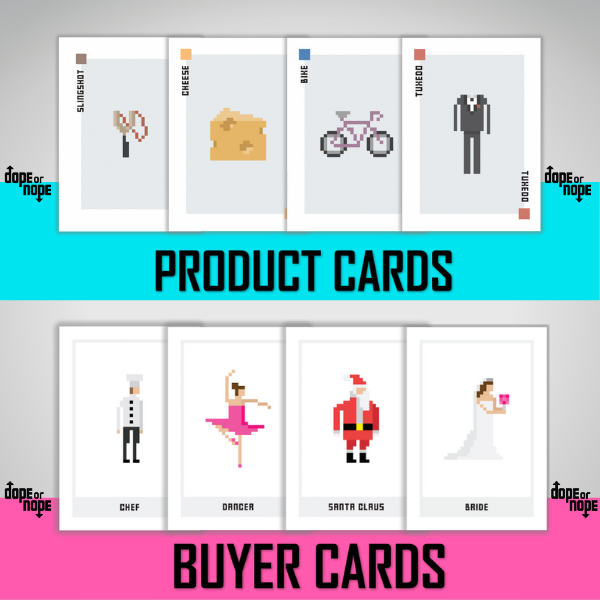

Extraordinaires Design Studio
“The Extraordinaires® Design Studio is a powerful learning tool that introduces children to the world of design, teaching them the foundations of design in a fun and engaging way. Your clients are The Extraordinaires® – over the top characters with extraordinary needs – and it’s the job of your student or child to design the inventions they require to fit their worlds.”
Here are some student examples of this activity:


Flipgrid Reflections
For the above projects learners used Flipgrid to discuss the details of their projects. Then they commented on one another’s work. Here is an sampling of student Flipgrids:
Inventor’s Workshop
Inventing is a skill and every student can develop that skill. It may be cliche, but it’s true–kids are natural inventors. And once taught the skills of how to invent, there is no stopping them (Opinion: Every student can be an inventor).
I was able to get a DonorsChoose project funded whereby I bought each of my twenty students a box of the Inventor’s Boxes and had a great time delivering them to each of my student’s homes. It was great having all of these materials in one box but none of the materials was unique or unusual. This means teachers can create their own invention kits for their students that is relatively inexpensive materials – straws, pom poms, craft sticks, string, pipe cleaners, rubber bands, binder clips, googly eyes, dowels, and foam.
They spent many hours fully engaged during remote learning making inventions including musical instruments, board games, new tools, machines, and robots.


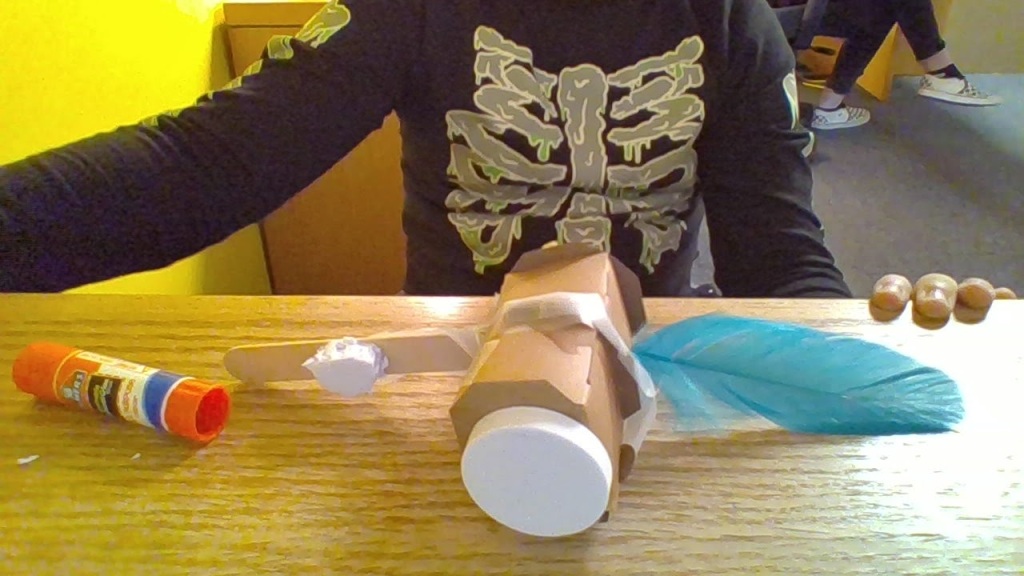

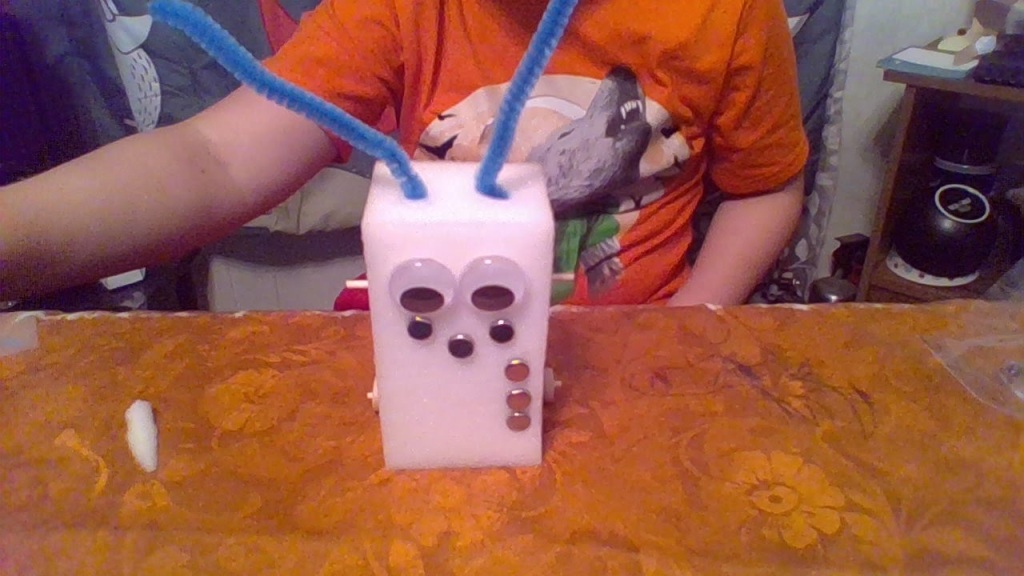
They then took images, posted them on their own individual Google Sites, and reflected on their attributes.
Making Board Games
My learners were given the simple directions to making a board game out of materials they found around the house. I thought this would be a fairly quick activity but they spent hour after hour creating them. They made game pieces, playing boards, playing cards, and tender. They then played their games remotely with the maker moving the game pieces, reading the playing cards, etc. They also spent hours playing one another’s games.
They were so many benefits of this activity: developing their creativity; communicating and relationship building with peers; and having authentic connections and fun during the difficult pandemic times.
Puppet Making and Green Screen Recording
Puppet-based learning teaches students design thinking, growth mindset, writing, how to work in sharable media, and how to approach learning without fear. Plus, it’s fun (6 Reasons Why Puppets Will Change Your Classroom Forever)!
This past week I visited my students’ homes yet again (love doing it) to deliver puppet making materials (felt puppet blanks, googly eyes, felt pieces, pom poms, Elmers glue) and green file folders for their green screen background. For the next several weeks, they will be making their puppets, writing scripts, recording their puppet shows in front of the green file folder, and then editing it with a background in https://clipchamp.com/. I will add some examples of their projects after their completion.
Starting the Year with “All About Me” Activities
I have written before about the beginning of the school year, Beginning the School Year: It’s About Connections Not Content.
I begin all classes focusing on having the students make connections between each other and with me. I want students to learn about one another in a personal way. I want to learn about my students so my instructional strategies can be more personalized and tailored to their needs and interests.
This year given remote learning, both synchronous and asynchronous, I developed technology-enhanced “all about me” activities that my learners could do remotely. These types of activities are even more appropriate than ever as a substitute for the typical “what I did over the summer” assignments.
Book Creator All About Me Activity Descriptions
The following Book Creator of descriptions and examples of all about me activities is shared with my learners, grades 3 through 6, via our district’s Open Access website:
This format provides my learners with a kid-friendly presentation of their All About Me activities.
Detailed Activity Descriptions
Bitmoji Learning Environment

Bitmoji classrooms have become a bit of a craze. They are described in more detail in the Edutopia article, Educators Turn to Bitmoji to Build Community and Engagement. A legitimate criticism leveraged against them is that they are teacher-centric. It is the teacher doing the work. I believe that if learners are not doing as much or even more creating than consuming, then this is a problem. As such, I am asking my students to create their own optimal learning environments. To begin, I ask learners to have a look at mine.
I ask them to note my sofa, picture of my cats, bookcase with books and art materials, my refrigerator with my diet Coke, plant, and window. Then I provide each of my learners (I only have 12 of them) with a Google Slide template, Build Your Own Bitmoji Classroom, developed by @HollyClarkEdu and @themerrillsedu. To their template I add a variety of Bitmojis I created for them due to them being under the age of 13. To learn how to create bitmojis for your learners, see this post by Matt Miller, https://ditchthattextbook.com/bitmojis-for-your-students-how-to-create-and-share-them/.
Personalized Feelings Chart
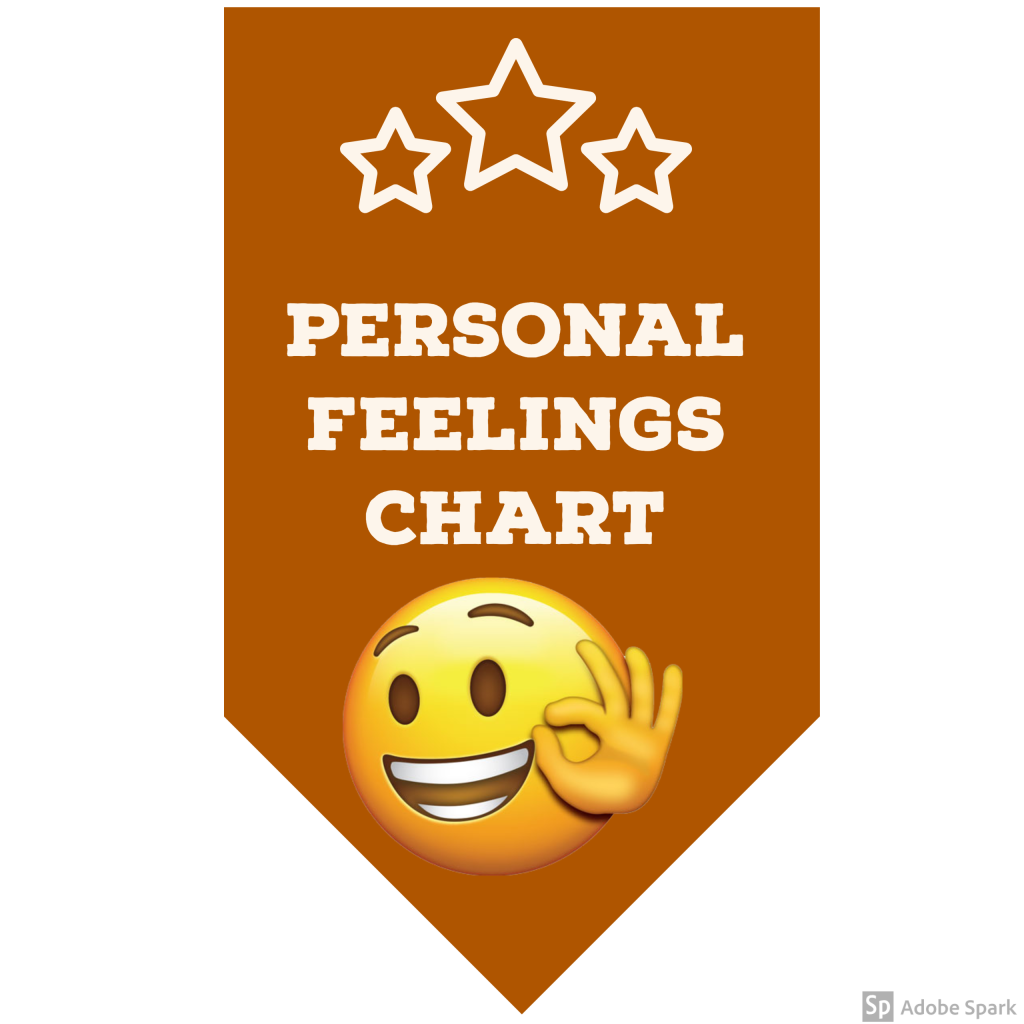
I start all my classes, both elementary school and college classes, with an emotional check in. I discuss this in more detail in Emotional Check-Ins in a Teaching Webinar. Last year, I had my elementary students make their own feelings pillows for our emotional check-ins (made with felt of different colors, sharpies, yarn for sewing, and stuffing). They loved them. This year, due to remote learning, they are making their own personalized feelings chart. They start by identifying 8 to 12 feelings they typically experience using the Mood Meter developed by the Yale Center for Emotional Intelligence:
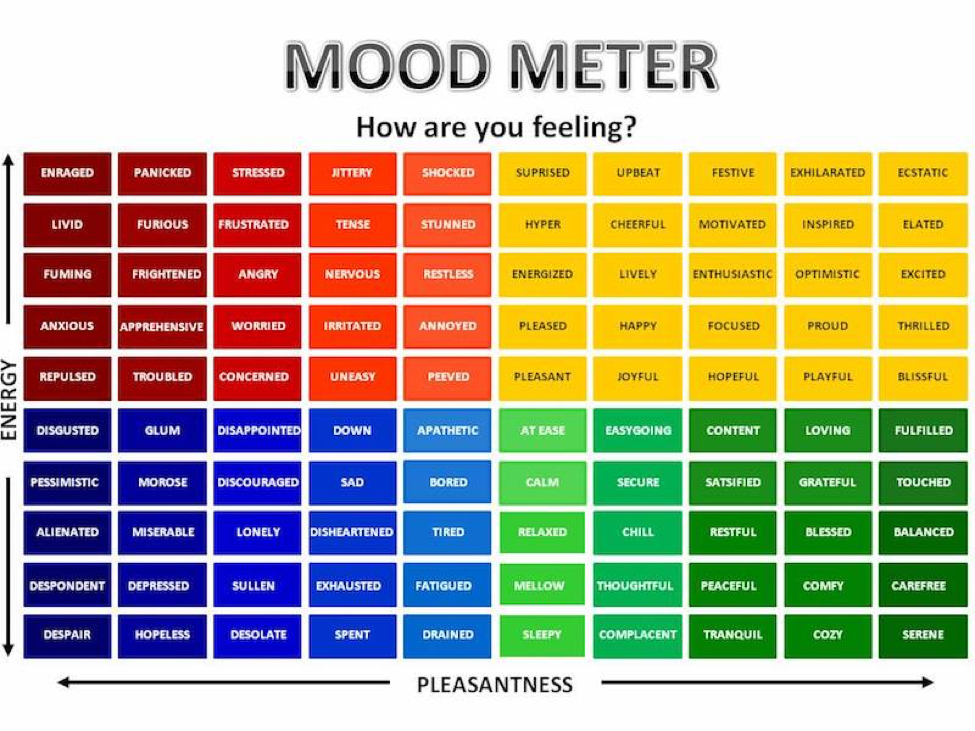
They are asked to select a few from each color. They use either Adobe Spark or a Google Slide to create their own. I show them how to do image searches with each platform and my own personalized feelings made with Adobe Spark as an example:
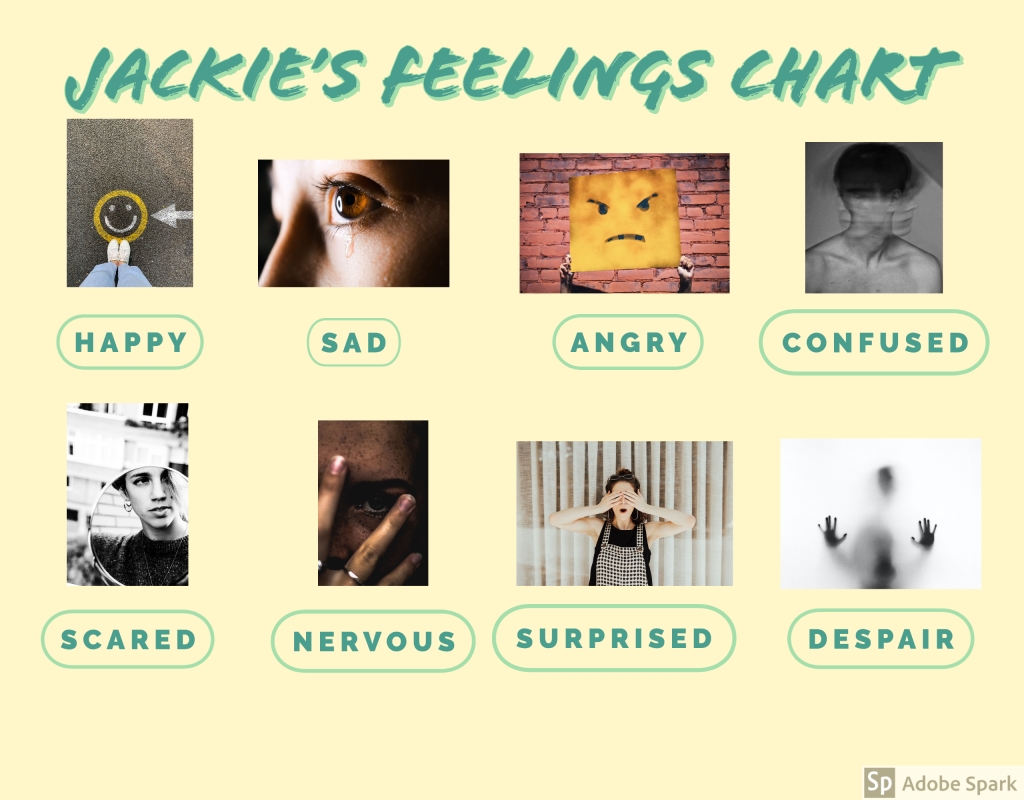
Lego Selfie
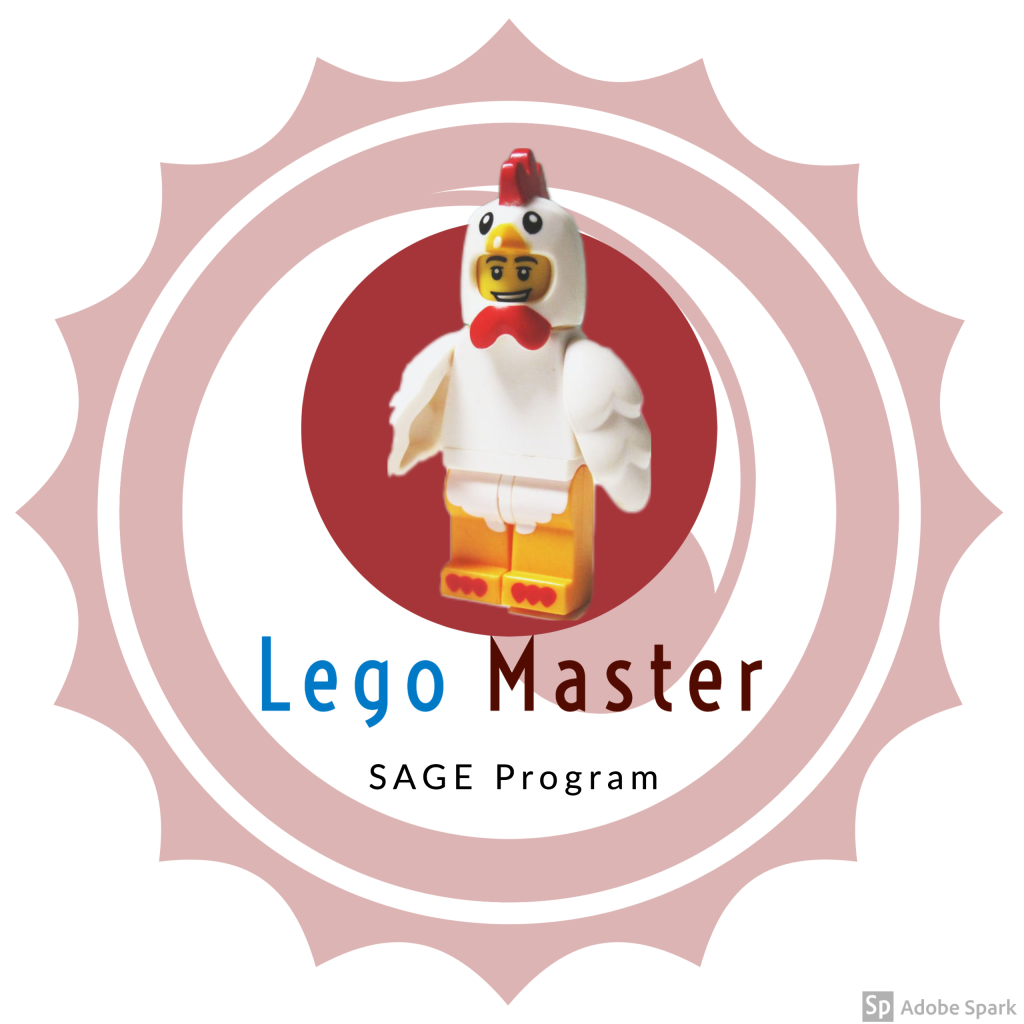
I learned about the Lego Selfie through a post on Aaron Maurer’s Coffee for the Brain. Most of my learners love Legos and have them at home so I think this would be a great choice for them. For those who do not have them at home, they can use the virtual Mecabricks or choose a different activity. Examples of Lego Selfies can be seen at https://photos.app.goo.gl/N1AJSchhanykYgTq7.
Kahoot Selfie

Most teachers and students these days know about Kahoot, a game-based learning platform that makes it easy to create, share and play learning games or trivia quizzes. For this All About Me activity, learners create their own Kahoot Selfie with 5 or more Kahoot quiz questions about themselves, each question having a four possible answers with only one of them being correct. Here is a template to help them with planning – https://kahoot.com/files/2017/07/kahoot_paper_template-1.pdf and an actual Student Selfie Kahoot that they can duplicate and edit with their own questions and answers (they will need their own account to do so).
Nature Materials Self-Portrait

To get my learners away from their computers, one of the All About Me activity choices is to go outside to collect natural materials to create a self-portrait. They have to collect and use at least two dozen objects from nature as part of their design.
Comic Strip: A Change I’d Like to See in the World
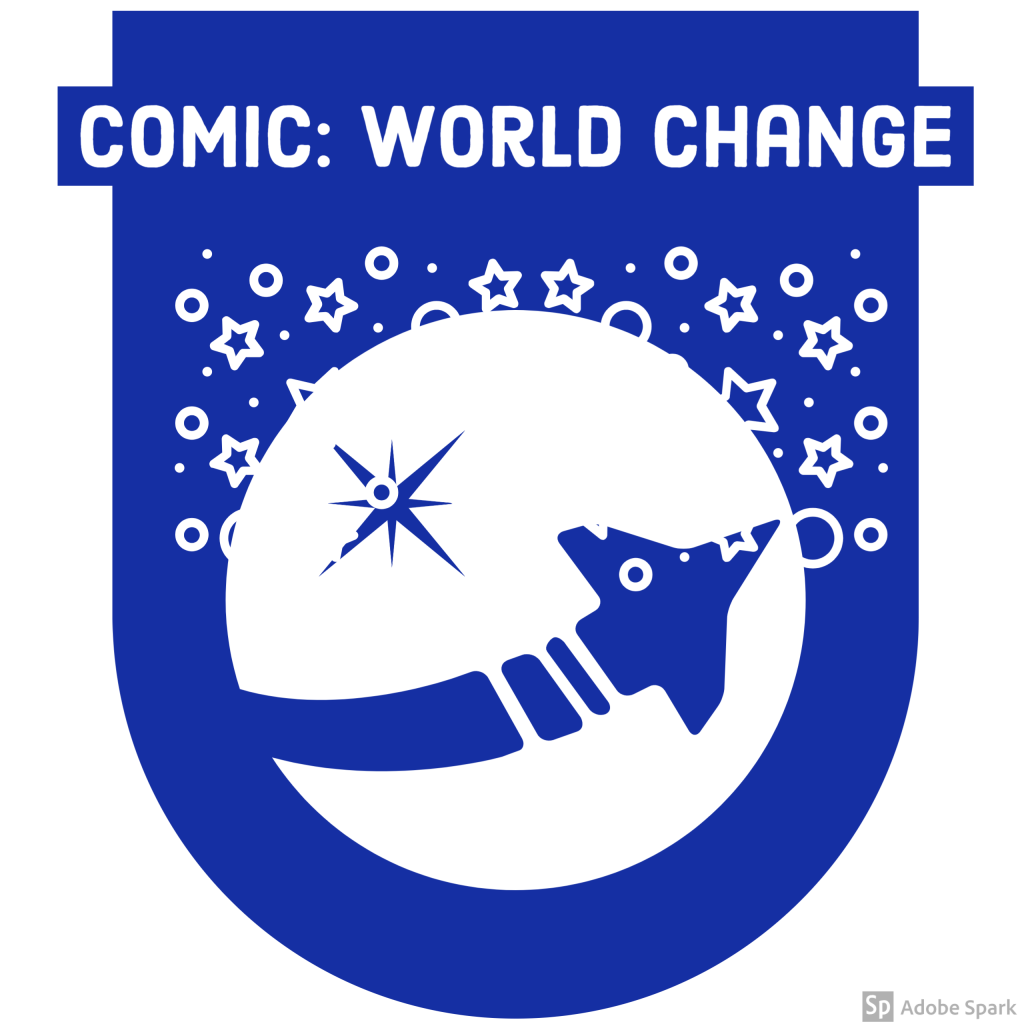
For this activity, learners create a comic strip of at least 6 cells that describes a change they’d like to see in the world. I really like StoryboardThat and have an account for it so this is the platform my students use. Here is an example I found so learners can have an idea what to create:
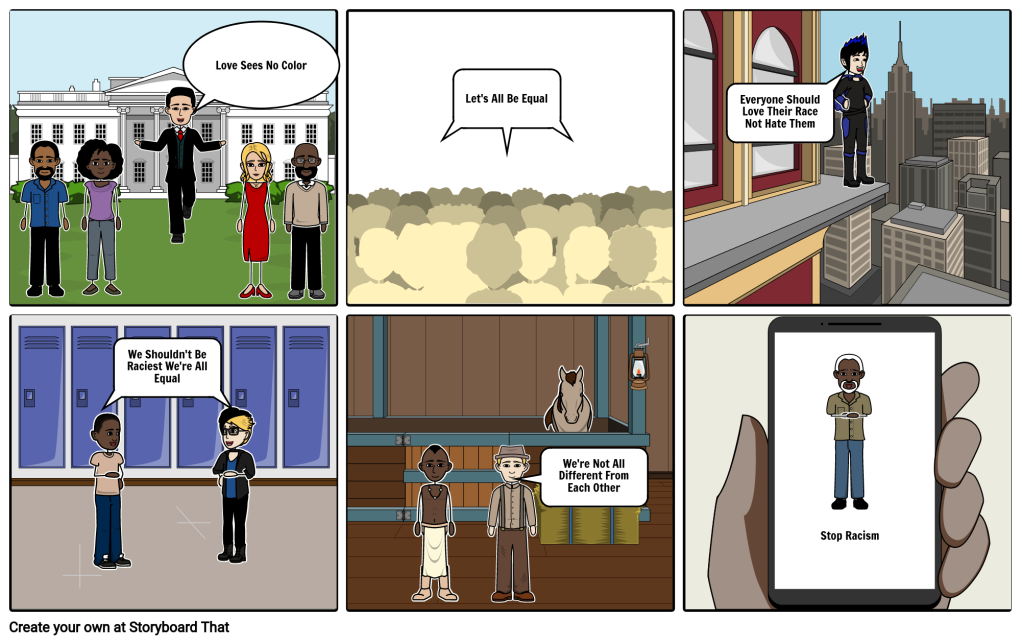
Flipgrid Video: My Hero and Why
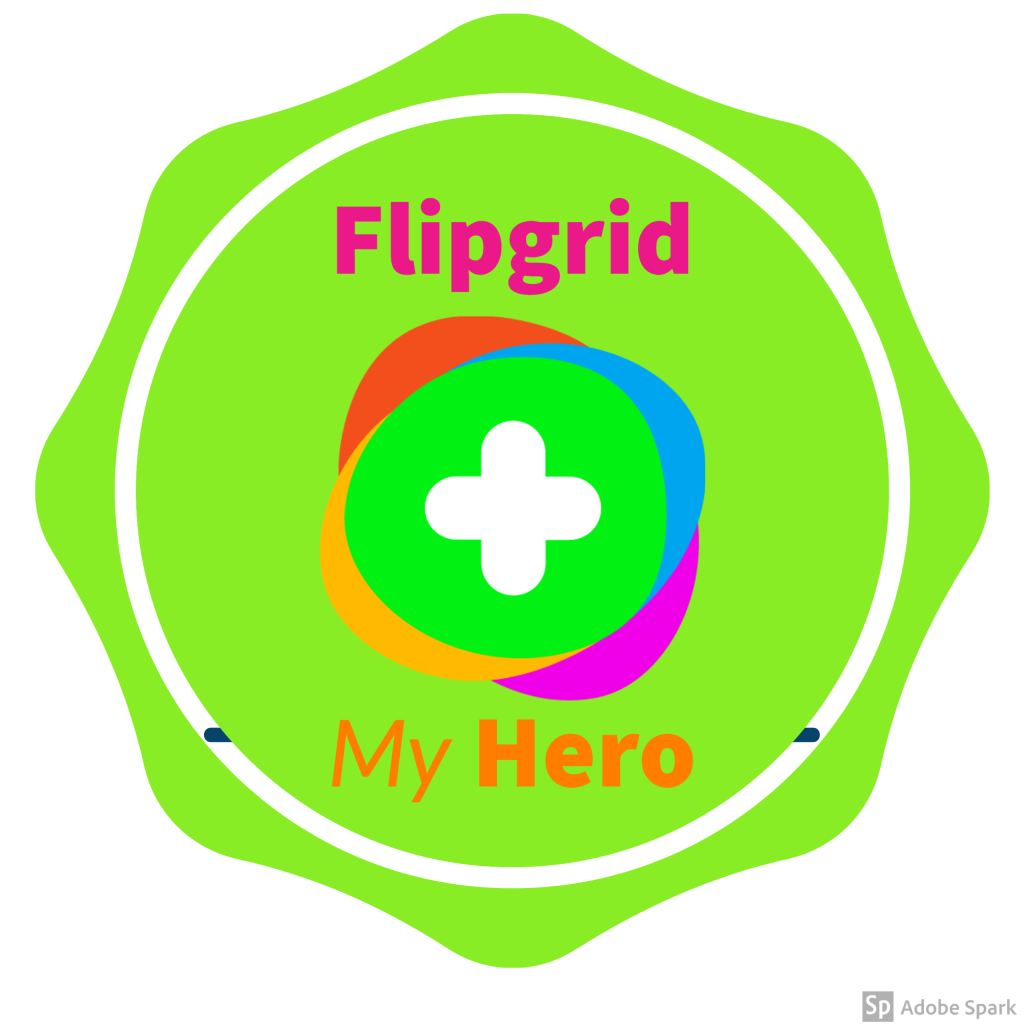
Flipgrid, as most educators know, is a social learning platform that allows educators to ask a question, then the students respond in a video. Students are then able to create video comments to one another’s posts. For this activity, learners first watch For the Heroes: A Pep Talk From Kid President. They then access our class Flipgrid to create a video that describes their hero.
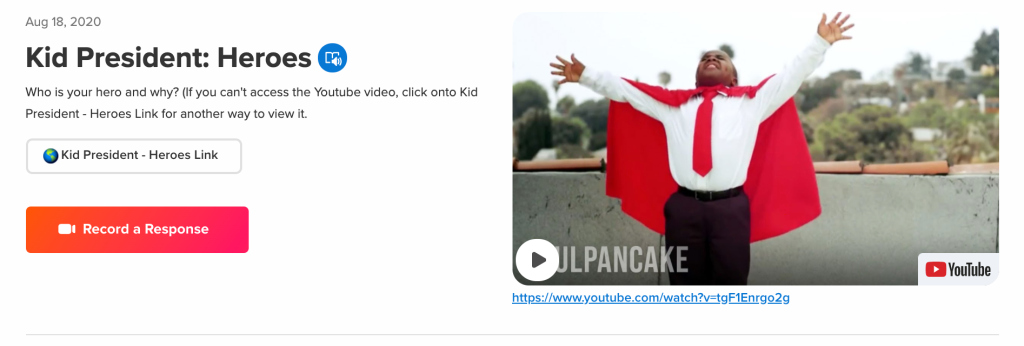
Here is a link for you to make your own copy – https://admin.flipgrid.com/manage/discovery/details/24147.
Fake Instagram Account
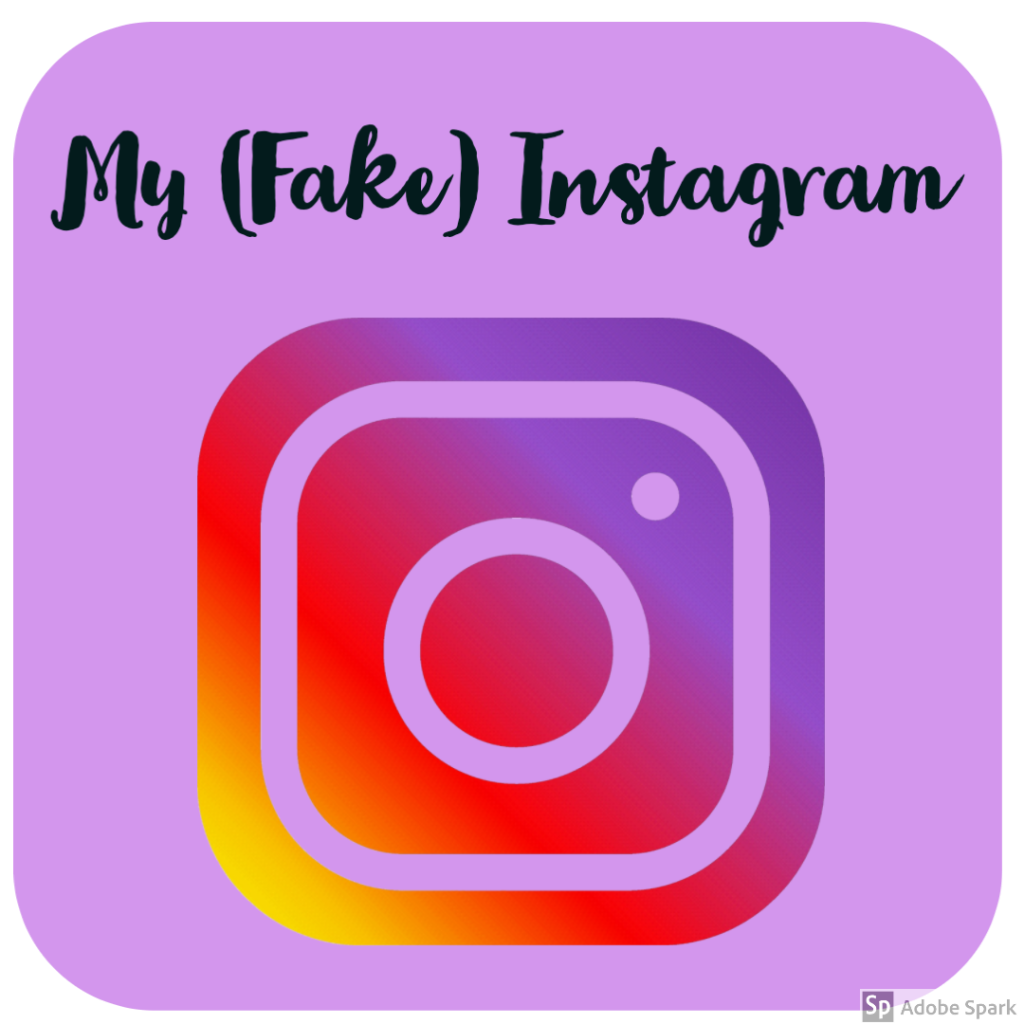
Because my learners are elementary age, they don’t (or shouldn’t) have their own Instagram account. This activity allows them to create their own (fake) one. The blog post, Fake Instagram Template with Google Slides (FREE), describes the process for doing this. This template – https://docs.google.com/presentation/d/1_gupBqIZBToioNFgbAb4nFVlsJgbdW5xneccto6pcFk/edit?usp=sharing – can be used by going under file to make a copy.
Here is my example:
Google Tour Creator

For this All About Me activity, learners create their own 360 degree virtual tour using Google Tour Creator. They need to include at least 6 geographic locations where they’d like to visit. This Google Tour Creator Tutorial video can help you and/or the learners use this tool. Here is the example I created – https://poly.google.com/view/8HpqhXYHzN4.
Aggregating Their Artifacts
Learners are instructed to aggregate all of their All About Me artifacts on a Google Site they create (we are a Google district). For artifacts that aren’t web based like the Lego Selfie and Nature Self portrait, they take photos of them to upload into these photos into their site. A Google site provides me with a way to check their work and give feedback. The learners will also have them all in one place to show their families and easily revisit at a later date.
All About Me Class Badge Progress Chart
The following chart is used to keep track of each student’s progress. They are required to complete the Bitmoji Learning Environment and Personalized Feelings Chart. They can then choose four out of seven others. They can work on the activities in any order they choose. Once completed, I check them and award the badge using this chart to indicate its completion for the individual students.
Here is a link in case you want to make your own copy – https://docs.google.com/document/d/1HNDc202wJE50BGh97CteNdpt8tOGTYg96DOeP49YvGc/edit?usp=sharing
Personal Progress Chart
Learners are asked to make a copy of the following progress chart which is in the form of a Netflix playlist template (created by the talented @MeehanEDU) in order to create their own playlists of completed activities for this unit as well as ones we’re doing later in the school year. You can also make a copy and adapt it for use with your learners.
Here is a link to the template – https://docs.google.com/presentation/d/19Nkwml_hHK6N2KNyHxynOjkUltp_ld9AMGQ0K05y2yI/edit?usp=sharing.
Going On A STEM-Maker Journey WITH My Students
Last semester, I worked with a few high school students to create a project for the New Mexico Governor’s STEM Challenge. Being a learner-centric, process-oriented educator (hence, the name of my blog – User Generated Education), I embraced the following practices during this project.
- Learners selected and developed their problem statement and guiding question.
- Learners naturally tapped into one another’s strengths, managing their strengths without any intervention from me. Some were good at problem conception, others at envisioning solutions, others at research, and still others at creating the graphics.
- My role was that of resource provider and feedback provider. I shared and explained the challenge requirements, reviewed the qualities of valid websites, gave feedback on their research and written work, and provided them with materials and tools such as Arduinos.
- Community resources were used reinforcing that communities contain experts – that teachers don’t have to be experts at everything. We visited the local makerspace so the learners could learn and use their 3d printers and laser cutter.
- Given the nature of this project-based, problem-based format, grading was based strictly on class participation using the criteria of, “Worked on the project during class time.”
Although, I often approach my classroom instruction using the practices as specified above, this one took me even farther from a place of knowing. They selected CO2 emissions and a chemistry-based solution of which I knew very little, so I was not a content expert. We learned about this together. I had a little experience with Arduinos but not lots so I was not a technology expert. We learned a lot more about how these worked together. We went on this journey together and I loved being a co-learner with my students.
Here is a highlight video of their project:
Much to my chagrin, they did not win an award (19 awards were given to the 43 entries). Their rewards, though, cannot be overstated:
- They learned some concrete and practical skills from going to the local makerspace, and getting instruction on their 3D printers and laser cutter. They also helped them work out some difficulties they had troubleshooting problems with the Arduino part of the project.
- They experienced the rewards and frustrations of working on a months long project including persistence, having a growth mindset, dealing with failure, and following through with a project through its completion.
- One of the students has pretty much checked out of school. She was mostly fully engaged throughout the duration of this project.
Even though their excitement about attending and presenting their project was obvious during the hour long ride home as they spent that time brainstorming ideas for projects for next year’s Governor’s STEM Challenge.
A Brain Science Hyperdoc Activity
Judy Willis, a neuroscientist turned teacher, in How to Teach Students About the Brain writes:
If we want to empower students, we must show them how they can control their own cognitive and emotional health and their own learning. Teaching students how the brain operates is a huge step. Teaching students the mechanism behind how the brain operates and teaching them approaches they can use to work that mechanism more effectively helps students believe they can create a more intelligent, creative, and powerful brain. It also shows them that striving for emotional awareness and physical health is part of keeping an optimally functioning brain. Thus, instruction in brain function will lead to healthier learners as well as wiser ones.
I teach a unit on the brain each year. This year I am teaching a 9th grade freshman seminar and decided to do a brain science unit with them. For this unit , I created a brain science hyperdoc for them. A hyperdoc is:
A HyperDoc is a digital document—such as a Google Doc—where all components of a learning cycle have been pulled together into one central hub. Within a single document, students are provided with hyperlinks to all of the resources they need to complete that learning cycle (https://www.cultofpedagogy.com/hyperdocs/).
The Brain Science Hyperdoc
Here is a completed brain science hyperdoc so you can see what was required and how one student completed it.
Making Models of the Brain
One of the hands-on activities was to work in a small group to create a model of the brain lobes + cerebellum out of playdoh, and then add post-it note “flags” for each part that indicates its name, function, and how to promote its health.
Creating Neuron Models
As a treat and to reinforce the parts of the neuron, students used candy to make a neuron, label its parts on a paper below, and then show as a group how one neuron would communicate with the next neuron and then to the next and so on.
Creative Writing Activity
One of the final projects of their brain science activities was to pick two activities from the list of creative writing activities about the brain found at https://faculty.washington.edu/chudler/writing.html. One of my students went all out to create a newspaper called The Brainiac News which follows. Using her own initiative, she started a Google Site to post a series of tongue-in-cheek stories. So impressive!




